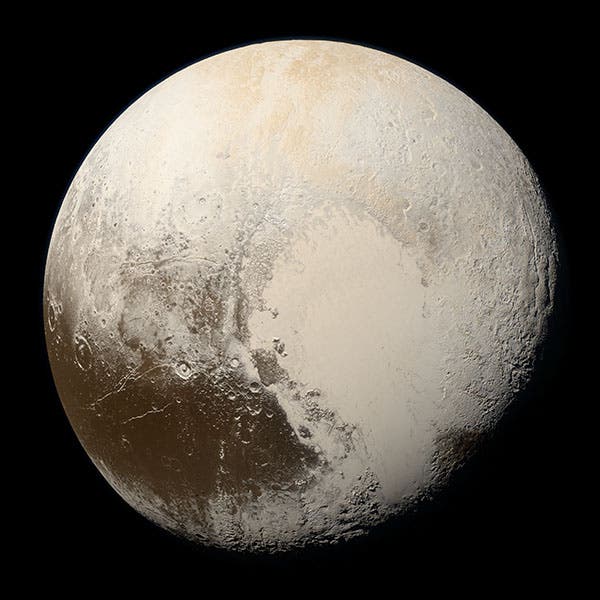Scientist of the Day - New Horizons
The New Horizons spacecraft, bound for Pluto, blasted off its launch pad aboard an Atlas V rocket on Jan. 19, 2006. New Horizons was the brainchild of Alan Stern, planetary scientist at the Southwest Research Institute in Boulder, Colorado. The two Voyager missions, launched in 1977, had visited Jupiter (1979), Saturn (1981), Uranus (1985) and Neptune (1989), and returned fantastic images of all four planets and their many moons, but Pluto was nowhere near the flightpath of either Voyager spacecraft and was left out of the game plan. Stern set out to remedy the omission.
Even though New Horizons was the fastest moving spacecraft we had ever sent out, it still took 9 1/2 years to get to Pluto, which at the time was about 7 times further out than Jupiter. Since New Horizons was traveling so rapidly, it needed exceptional optics to capture images while speeding by at 50,000 miles per hour, and then a lot of time to dump the data earthward. But it was all very successful. We now have superb images of Pluto (first and sixth images), its large moon Charon (fourth image), and its other four moons, to go in the planetary gallery along with those from Voyager. New Horizons is still at work – it took an image of a Kuiper Belt object named 486958 Arrokoth in 2019 (last image), the most distant solar system object ever photographed in a fly-by and will be on the lookout for more for the next 5 years.
New Horizons is one of five spacecraft that has left or will leave the solar system, the others being Voyager 1 and 2 and Pioneer 10 and 11. It also carries a small portion of the ashes of Clyde Tombaugh, who discovered Pluto in 1930, and who died in 1997. At the time, Tombaugh was only the 2nd human whose ashes had left Earth, and although there was no way to plant them on Pluto, they still came closer to Pluto than any human remains ever have, by about 2 billion miles. One day, they will be the first human remains to leave the solar system. I do not think they will be overtaken by the recent commercial launch of the Vulcan Centaur Enterprise mission on Jan. 8, 2024, which carries capsules with the ashes of 150 Star-Trek-affiliated and other individuals and is said to be destined for “deep space,” which I am guessing it is not all that deep.
Modern accounts of the New Horizons mission often do not discuss its most controversial aspect, which arose 7 months after launch. On Aug. 24, 2006, the International Astronomical Union (IAU) decided to accept the recommendation of a committee that Pluto should be removed from the canonical list of nine planets and be reclassified as a dwarf planet, which was a new category of solar system objects. Alan Stern and his team were outraged, and no wonder! How would you like to spend a decade planning a trip made special because it would image and map the last remaining planet, only to be told that your destination was no longer a planet and had been downgraded to dwarf status? Not only that, but the IAU decided that the large asteroid Ceres should also be designated as a dwarf planet, and there was a spacecraft named Dawn on its way to Ceres, and it would arrive there before New Horizons reached Pluto in 2015. So the New Horizons mission wouldn't even be the first to visit a dwarf planet. Stern refused to accept the new designation in 2006, and as far as I know, he never has. I trust that some of the bitter feelings were mellowed by the great success of New Horizons in its fly-by of July 14, 2015.
William B. Ashworth, Jr., Consultant for the History of Science, Linda Hall Library and Associate Professor emeritus, Department of History, University of Missouri-Kansas City. Comments or corrections are welcome; please direct to ashworthw@umkc.edu.













